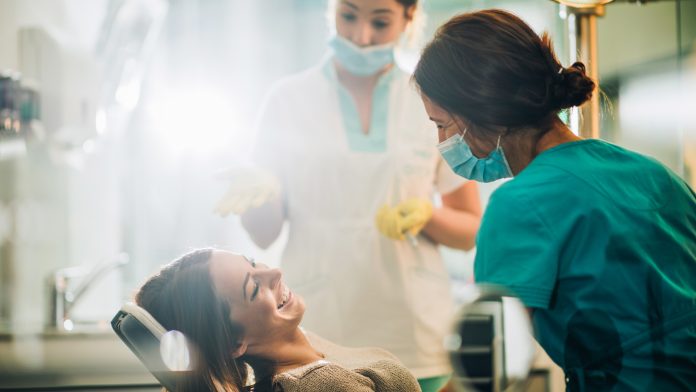
New dental reconstruction material developed in Sweden using biocompatible materials offers unprecedented improvements over existing acrylate-based fillers.
Individuals may no longer have to worry about the period in which dental repairs last. The biocompatible materials adapted from the bone fracture glue research held at Sweden’s KTH Royal Institute of Technology, can be moulded in a clinical setting, which surpasses currently-used implant materials in key areas of stiffness, strength, biocompatibility and adhesion.
Biocompatible materials: a new era in hard tissue repair
Michael Malkoch, professor in the Department of Fibre and Polymer Technology at KTH, explained how the new material was found to bond 160% better to tooth surfaces than current commercially-available polymers. This essentially means fewer patients would experience detachment of dental fillers, the new biocompatible materials also have the potential for 3D printing in a clinical setting.
“It provides higher strength, straightforward moldability and non-toxicity. We believe this foretells a new era in hard tissue repair.” Malkoch said.
The work developed could act as a potential guide for future development of biocompatible materials for implants.
The team used light-initiated thiol-yne coupling (TYC) chemistry to polymerize triazine-trione (TATO) monomers, in contrast to the standard thiol-ene coupling (TEC) systems currently used.
The schematics of the Biocompatible materials
The TYC reaction has the advantage of generating higher crosslinking density, thus resulting in more rigid and mechanically stronger materials. Malkoch further explains: “This is due to the nature of the carbon-carbon triple bond that covalently bond to two thiols via photochemical reactions.”
“An important feature is the biological profile of the composition and final materials have excellent biological profile. Personally, I would rather have these materials as dental filler than existing acrylate based one, known for their allergenic properties and questionable compositions.”
Supported by the Knut and Alice Wallenberg Foundation
The research follows a recent article published in the journal Advanced Functional Materials, in which Malkoch’s team and researchers from Karolinska Institutet created a bone fracture adhesive that combines the rigidity and load-bearing properties of dental resin composites with the bonding strength of self-etching primer.
The research was financed by the Knut and Alice Wallenberg Foundation under the Wallenberg Academy Fellow Program.









